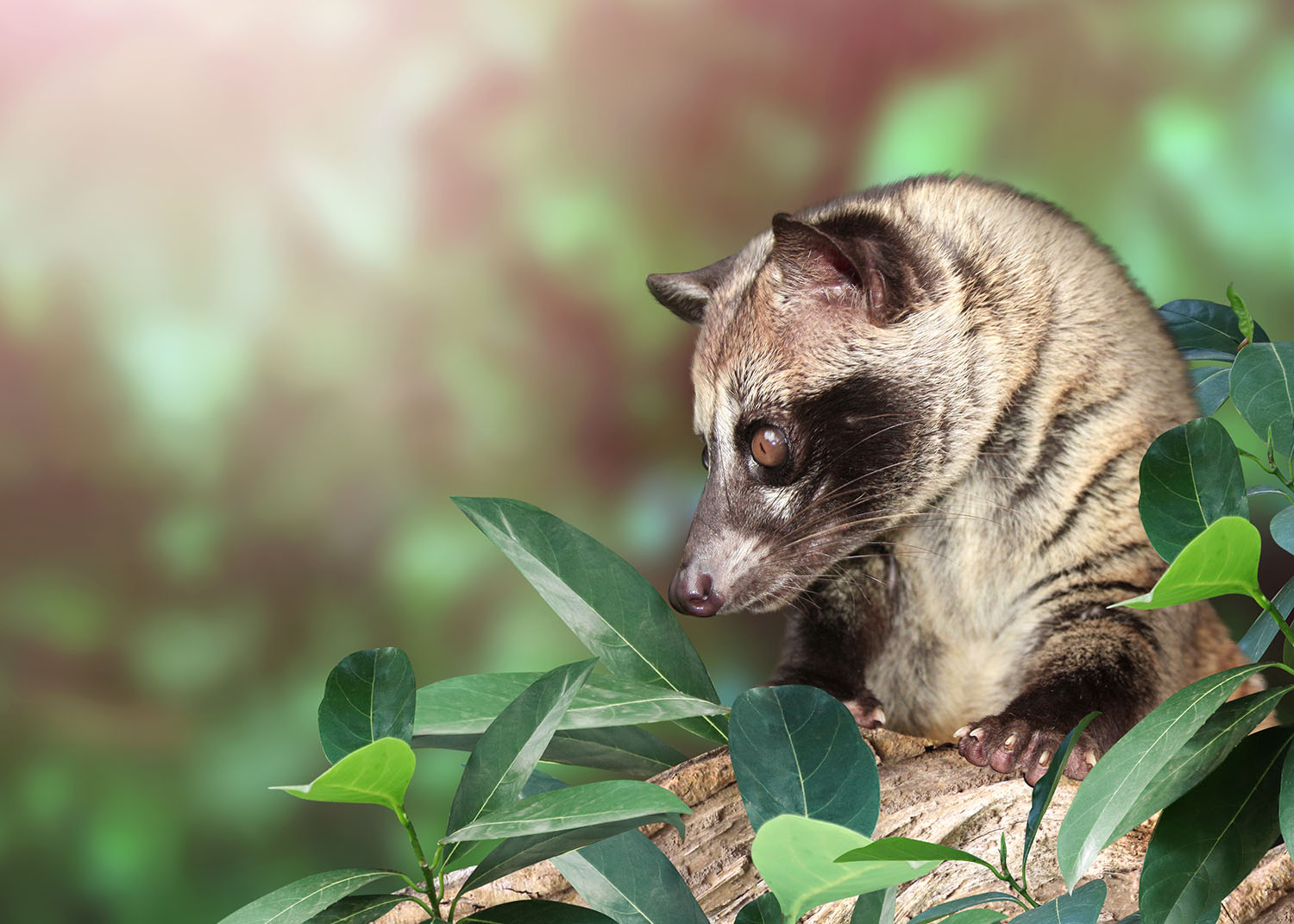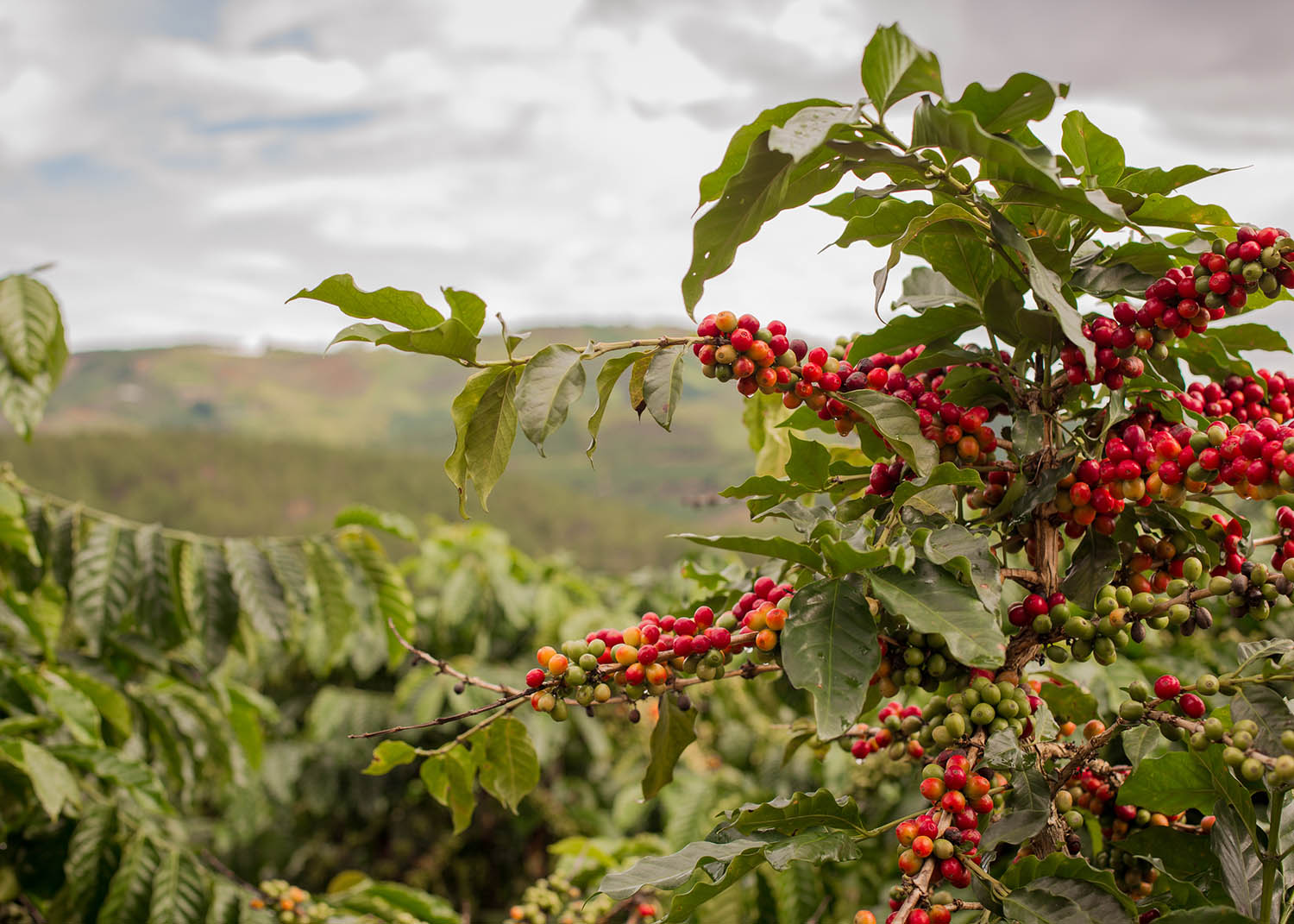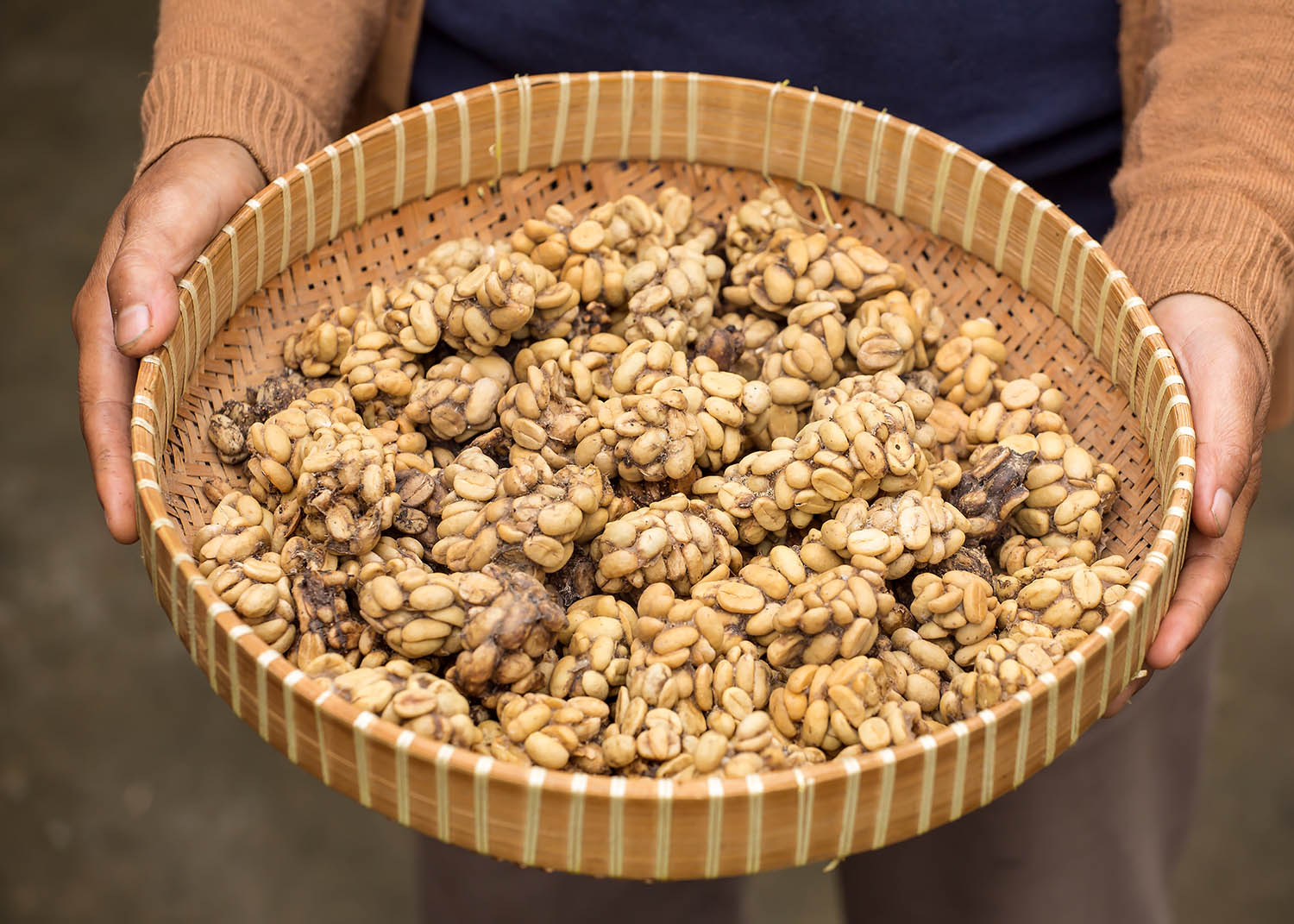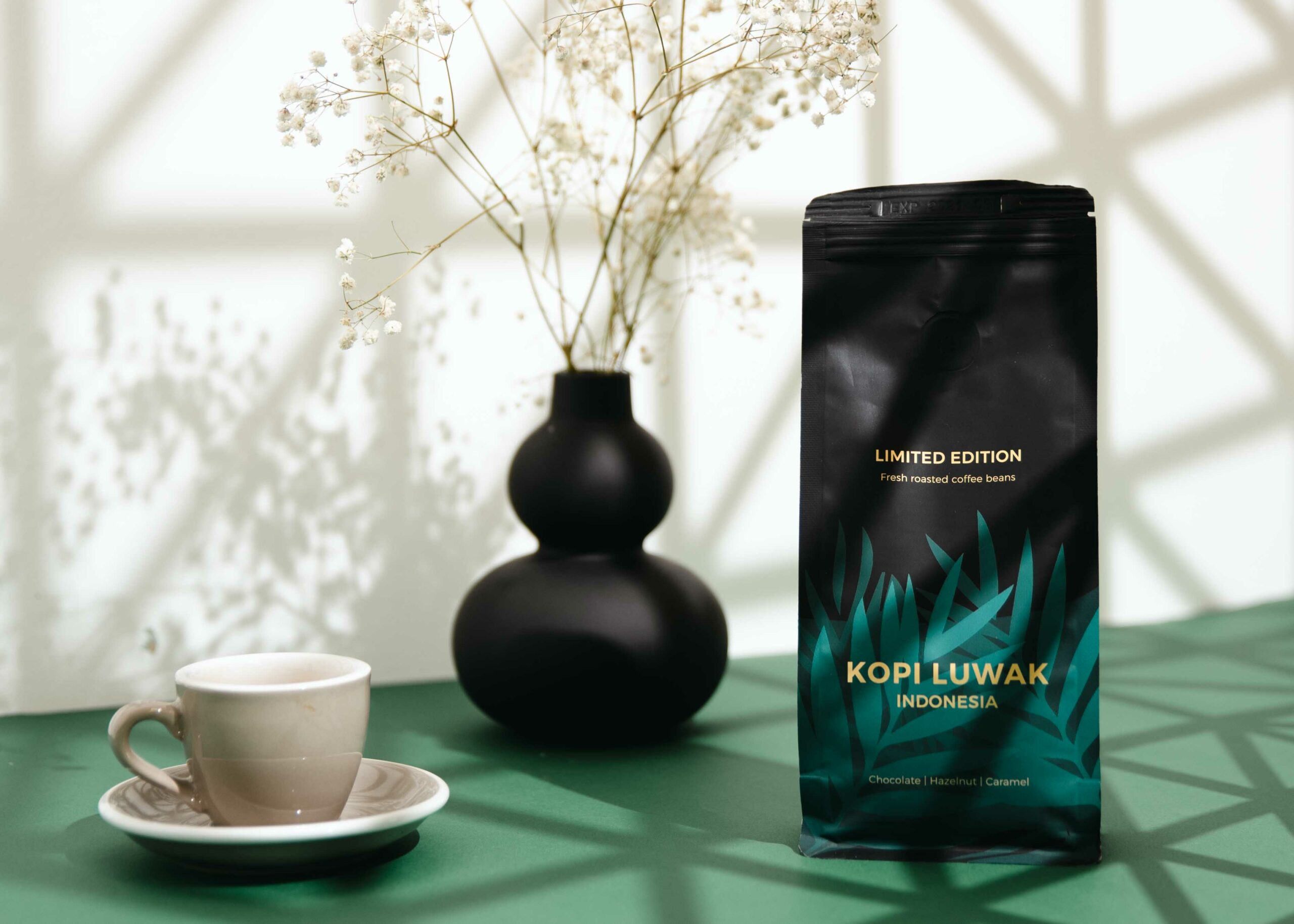Kopi Luwak: Is It Worth Trying?

Over the history of coffee, no variety has attracted quite as much attention as kopi luwak did. Processed in the digestive tract of Asian palm civets, these coffee beans were once thought to be the world’s most expensive. Because of how rare they are, how uniquely they’re processed and how exceptional their taste is said to be, this delicacy of the coffee world has been sought after by thousands of curious tasters for years now. Its popularity peaked in 2007 though, once the famous American movie The Bucket List hit the screen. The hero of the hit film—a quick-tempered billionaire called Edward Cole and played by the eccentric Jack Nicholson—boasts about drinking the world’s rarest coffee. This coffee is, of course, none other than the glorious kopi luwak.
This wave of popularity came and went—yet those working in the coffee industry still hear questions about these extraordinary beans. What can be said about this coffee? Is it really that special? How does it differ from other coffees? Finally, is kopi luwak worth trying at all? Well, as long as they’re high-quality, any coffee beans out there will guide you towards a truly unique experience, an adventure filled with aromas and flavours that you haven’t had a chance to discover yet—and kopi luwak is definitely no exception. So, if you’re feeling curious, go ahead and join us on a journey across the exciting realm of kopi luwak!
The Story of Kopi Luwak: Where Did It All Begin?

Legend says that at some point in the 19th century, Dutch colonists residing in Indonesia ordered the local farmers to hand all of their coffee harvest over to the newcomers. If that wasn’t bad enough, they also prohibited poor Indonesians from picking coffee berries for their own personal needs. Robbed of their favourite drink, the shrewd locals soon found a solution though. Looking at palm civets—small local animals called luwak by the residents—one day, farmers noticed that they enjoy munching on coffee berries as much as they like eating tropical fruit and various insects. Once consumed, these coffee berries were stripped off their pulp in the digestive tract of a palm civet, while the seeds, or coffee beans, left behind were eliminated along with faecal matter. The locals ultimately decided to take a risk: they started picking, washing, drying and roasting these beans. Imagine their surprise when they found out that coffee of this kind tasted even better than the regular one! The resulting brew was subtler, less bitter, characterised by a particularly pleasant aftertaste. Rumours about this unique drink soon reached Dutch colonists as well. From there, it didn’t take long for kopi luwak to spread its exotic charm all over the world.
Kopi Luwak Goes Hollywood
We’ve already mentioned The Bucket List (2007), a movie that was largely responsible for lots of westerners rediscovering kopi luwak at the start of the 21st century. Let’s explore its influence further, shall we?
The film tells the story of two terminally ill retirees: Edward Cole, a corporate billionaire played by Jack Nicholson, and an ordinary working-class mechanic Carter Chambers played by Morgan Freeman. With seemingly nothing in common, these two characters find themselves in the same hospital room. Carter spends his days thinking about the limited amount of time he has left and ultimately decides to make a list of all the adventures he’d like to have while still alive. When Edward hears about this list, he makes Carter an offer the poor mechanic simply can’t refuse: to run away from the hospital, go on an extraordinary journey and make all of his dreams come true together.
In one of the first scenes of the film, we see Edward Cole pouring himself a cup of kopi luwak and stating proudly that it’s “the rarest beverage in the world”. The wealthy connoisseur even carries a suitcase with a coffee syphon in it everywhere he goes: this way, he can enjoy extraordinary flavours anytime, anywhere. Edward isn’t aware of where his favourite drink comes from though. The story of kopi luwak is ultimately revealed to him by Carter:
Kopi luwak is the world’s most expensive coffee—though for some, it falls under the category of “too good to be true”. In the Sumatran village, where the beans are grown, lives a breed of wild tree cat. These cats eat the beans, digest them and then… defecate. The villagers then collect and process the stools. It is the combination of the beans and the gastric juices of the tree cat that gives kopi luwak its unique flavour and aroma.
Having heard this, the two buddies start laughing hysterically. Carter catches his breath finally to cross one point out of his bucket list: it says Laugh until I cry.
With a scene like that, it’s no surprise that kopi luwak soon found its way into the bucket lists of numerous people all over the world. Encouraged by Nicholson’s charisma and intrigued by the unusual origin story, coffee lovers of the Western world were now eager to set off on new adventures of their own.
The Flavour of Kopi Luwak

All of these stories may leave you with a simple question: is this coffee really special? Or is its reputation nothing more than a marketing trick, the result of a funny scene from a Hollywood movie? Do these beans differ from other coffees and can true kopi luwak be recognised from its taste alone?
In 2004, Massimo Marcone, a food scientist working at the University of Guelph (Canada), made kopi luwak the object of his research. His goal was to find out if this kind of coffee truly differed from other beans in any way. Looking at kopi luwak with a naked eye did not reveal any significant differences, so Marcone went a step further and employed a powerful microscope. This was when he noticed small cracks on the beans: regular varieties weren’t cracked at all, so this was definitely something different.
After some careful research, the scientist found out that these cracks were the result of enzymes found in the stomachs of palm civets. The enzymes penetrated the shell of the bean and caused proteins to break down. Because these beans spent around 24 hours in the stomach of a palm civet, they began to germinate. All in all, kopi luwak can be said to undergo a peculiar sort of malting process, which is why we wouldn’t be too far off if we referred to kopi luwak as a “malted coffee”.
The amount of protein in your coffee is precisely what its bitterness level depends on: the more proteins there are in the beans, the more bitter the taste of the resulting brew is. Intense protein decomposition lends kopi luwak its delicate flavour. Other tests, such as electronic odour analysis, have also shown that the aromas and tastes detected in these beans differ from features found in coffee that hasn’t been processed by Asian palm civets.
There’s an important distinction to keep in mind though: the term “kopi luwak” refers to a certain processing method, not to a certain bean variety. The final taste of your kopi luwak depends on numerous other circumstances it encounters along the way, like the type of coffee chosen (arabica or robusta), harvesting conditions, the choices made by the roaster… All of this means that several different kopi luwaks can be marked by different qualities. Nevertheless, the general rule here is simple: the higher the quality of the coffee beans used and the more thorough, professional their processing, the more extraordinary the resulting brew.
Unsure whether this type of coffee is entirely safe to consume? Research performed by Massimo Marcone has proven it is. Thanks to meticulous cleaning and roasting, all undesirable residues are removed from the beans, while their most valuable qualities are successfully preserved and further accentuated.
Coffee Friend’s Kopi Luwak

Have we managed to convince you to give this exotic delicacy a try yet? If so, there’s some kopi luwak in our assortment! Coffee Friend’s limited-edition kopi luwak is produced from arabica beans of the highest quality grown in Central Java (Indonesia), at an altitude of 1500 m. It’s believed that this region is where the world’s finest civet coffee can be found.
What does kopi luwak taste like, you wonder? It’s intense, rich and particularly thick, marked by aromas of chocolate and nuts. There’s a note of toasted caramel. Once you’ve finished sipping it, a pleasant, long-lasting aftertaste lingers on your palate for quite a while. Sounds alluring, doesn’t it?
How Should You Brew Kopi Luwak?
The answer to this question is simple: brew it just like you’d brew any other specialty coffee! What does that mean exactly? Well, it means that specialty coffee, marked as it is by extraordinary aromas and flavours, deserves some extra attention and care. That’s why various pour-over and filter methods are generally recommended: they’re capable of revealing the remarkable notes that occur naturally in such coffees.
Cupping
When brewing, tasting and evaluating various coffees, true connoisseurs go for this preparation method. It’s very simple: all you need is a coffee grinder and a kettle, and all you really have to do is grind the beans and pour hot water over them. While this method might seem exceedingly straightforward, it actually has the least influence on the flavour of the resulting brew and allows you to enjoy every naturally occurring note. Read more about the subtleties of cupping here.
French press
Not only will this brewing tool enable you to enjoy the natural flavours of your coffee beans, but it’ll also eliminate grounds from your drink. Simply grind the beans, pour the ground coffee into your French press, add hot water and press down the plunger several minutes later. Look for more tips and learn how to brew truly delicious coffee in a French press here.
Filter coffee makers
If you’re a fan of particularly clean coffee flavours, give one of the numerous filter brewing tools a try. When making coffee in this manner, an additional filter is used: it separates grounds from the drink and only lets some of the coffee particles through (it all depends on how thick the filter is and how long the contact between coffee and water lasts). Lovers of intense tastes should go for an Aeropress, fans of subtler flavours can try out the Japanese V60 dripper, while those who prefer their coffee particularly clean will likely find the glass Chemex to be the right tool for them.
Syphon: brew it like Jack Nicholson
If you want to replicate the coffee savoured by Jack Nicholson’s character in The Bucket List, get yourself a syphon! Looking like something straight out of a science lab, this brewing tool is guaranteed to become a source of pure pleasure both for yourself and your friends or family.
How Can You Be Sure That Your Kopi Luwak’s Authentic?
With interest in it reaching unprecedented heights, the demand for kopi luwak skyrocketed too. Scammers were quick to jump on this train and the market was soon flooded with fake kopi luwaks: while the label stated that the coffee had been processed by Asian palm civets, the package actually contained nothing but regular old beans. The problem here is that both kopi luwak and beans processed in a less extraordinary manner all look the same to the naked eye. The only way to avoid being scammed is choosing reliable suppliers who can provide you with a certificate attesting to the origin of their kopi luwak. It goes without saying that Coffee Friend is definitely one of them!
To Conclude…
Listening to the story of kopi luwak, you might think it’s a myth or nothing more than a product of an overactive imagination. Rest assured knowing that this delicacy of the coffee world is as real as it gets though! Research has proven that this coffee is characterised by aromas and flavours that can’t be found in any other beans, so those praising its taste aren’t exaggerating either. To see for yourself, you’ll have to go ahead and try it! While you’re unlikely to start each morning with a cup of kopi luwak, we think that everybody should experience this wonder at least once—if not for some other reason, then simply so they can satisfy their curiosity. Why don’t you set up a cupping event at home and cross this unique adventure off your bucket list then?
